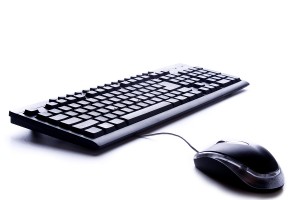Apple Inc. (NASDAQ:AAPL), according to an interview with several key figures that Macworld carried out for the California electronics giant’s 30th year in business, intends to keep a clear, sharp division between iOS and OS X into the visible future. Craig Federighi, Apple’s software chief, explicitly called out a merger of the two systems as a “waste of energy” and a “nongoal.” This attitude stands in strong – and intriguing – contrast to Microsoft’s deliberate policy of transforming Windows computers into oversized smartphones centered around touchscreens and desktop apps.
At the heart of the divergence is the philosophy of whether a single universal input device, or several different ones, are needed for different devices. According to Mr. Federighi, the “form factor” of some computing devices is better suited to a keyboard and mouse setup than touchscreen. In the interview, he even goes so far as to assert that switching the MacBook Air or the Mac over to a touchscreen, while possible, would not offer a “good experience.”
 Microsoft disagreed with this viewpoint with Windows 8, which attempted to optimize notebooks and desktops alike for touchscreen use. The results could charitably be described as “mixed.” Each version of Windows seems to be more poorly received than the last – with as many as 20% to 25% of Windows users still running Windows XP as of early April 2014 according to the BBC.
Microsoft disagreed with this viewpoint with Windows 8, which attempted to optimize notebooks and desktops alike for touchscreen use. The results could charitably be described as “mixed.” Each version of Windows seems to be more poorly received than the last – with as many as 20% to 25% of Windows users still running Windows XP as of early April 2014 according to the BBC.
By contrast, less than 1% of OS X users are still using OS X 10.1 “Puma,” XP’s Apple contemporary, according to a pie chart on Digital Trends. Another telling figure is that OS X 10.10 Mavericks is in use by 40% of Mac users, while Windows 8 is approaching just 10% of the overall Windows market.
Microsoft itself is acknowledging the problem by releasing Windows 8.1 as a much more mouse-and-keyboard friendly operating system than 8.0. Of the one-tenth of Windows users who are actually running the latest version of the OS, 60% are using a computer which has no touchscreen capability whatsoever. This seems to indicate that either by active preference or inertia, approximately 96% of Windows users prefer a mouse and keyboard interface to a touchscreen for their personal computing needs.
Perhaps Apple’s (AAPL) determination to keep the mouse and keyboard interface alive into the foreseeable future, and Microsoft’s problems with Windows 8 touchscreens, indicates something fundamental about computer products. It is possible that one interface is not universally applicable, and that people apparently prefer a mouse and keyboard setup for notebook and desktop systems not because of inertia, but because this input type has the most advantages for a specific type of computing, even if touchscreen offers a few extra benefits.
If this is so, then the Cupertino electronics firm’s stand on the issue may well give it a competitive advantage over Windows, depending on Microsoft’s choices. If the next iteration of Windows delves even deeper into touchscreen use and trivializes the mouse and keyboard even more, then Apple might win a larger slice of the computer market – ironically, not for the maverick innovation it has been famed for in the past, but for prudent and informed conservatism.



